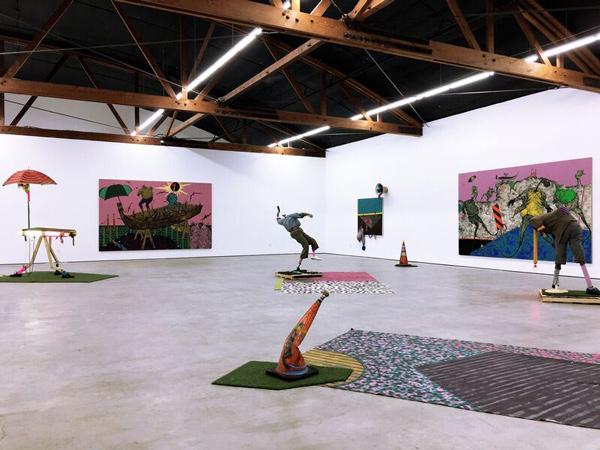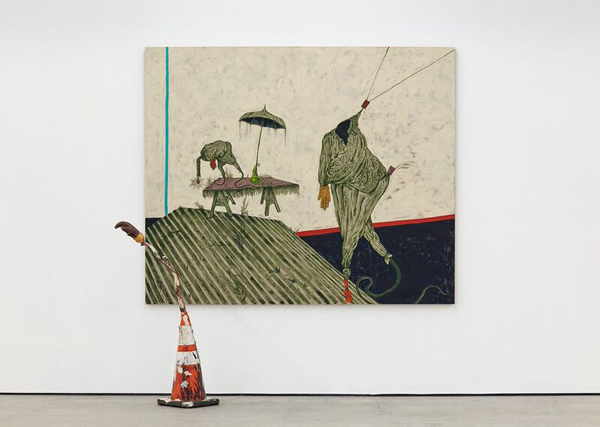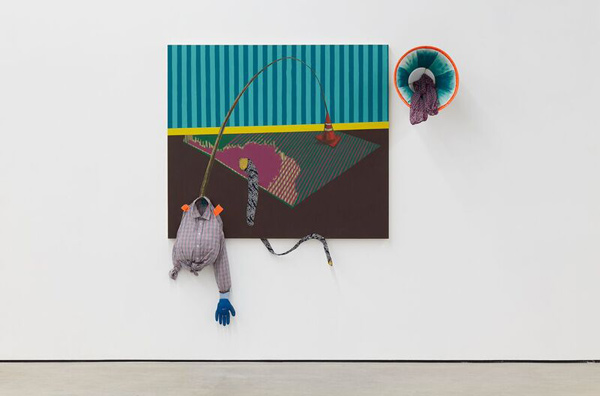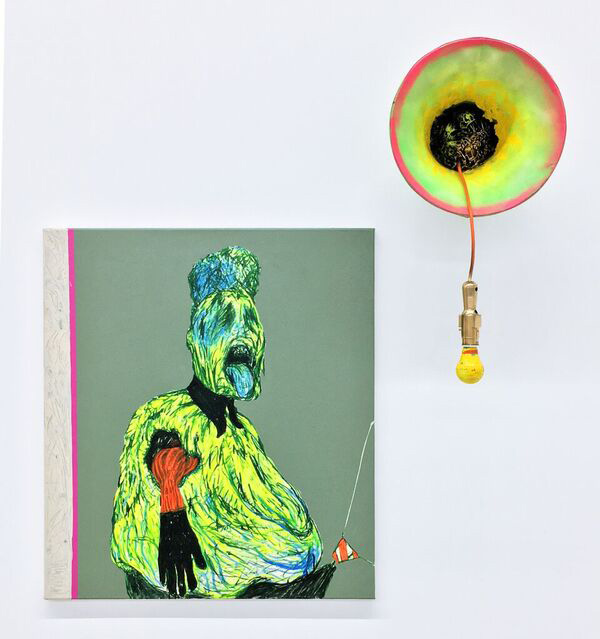“Bhabharosi,” the title of Simphiwe Ndzube’s show and several works therein, is a neologism the artist coined from the words “barbarous” and “rose” in isiXhosa, his native language, to refer to his protagonists. As insinuated, a mood of bittersweetness transfuses the exhibition. Variegated mixed-media works portray distorted figures whose ragtag garb and uneasily posed theatricality evoke dystopian fashion mannequins.

Simphiwe Ndzube, “Bhabharosi,” installation view, courtesy of the artist and Nicodim Gallery.
Born in Cape Town, South Africa in 1990, Ndzube must have witnessed his share of strife. However, the import of his scenes resides in their ambiguity. Form, posture and color allude to trial without overtly describing it. More importantly, his figures are of generic identities—so generic, in fact, that they have virtually no bodies, only clothing emitting serpentine appendages resembling whips more than legs and arms. Corporeally, the chimerical humanoids in works like The Underwater People (all works 2017) could represent anyone. In defiance of South Africa’s history, their generalized physiques transcend classifications of ethnicity, culture, race and class.

Simphiwe Ndzube, Untitled (Swing), 2017, courtesy of the artist and Nicodim Gallery.
Haberdashery is their primary identifier. As one walks around the show, an aesthetic of bricolage emerges. Some articles are rustic and drab, others flamboyantly dandy. In many areas of Africa, second-hand Western discards attire the disadvantaged. Perhaps the motley raiment bespeaks an attempt to surmount hardship and disfranchise, where Ndzube’s protagonists assert individuality through funky cosmopolite style. Yet often, they have no individuality left to assert: their ill-fitting, cacophonous costumes appear as loosely filled sacks or deflated balloons, as in Waiting for Mulungu 1.

Simphiwe Ndzube, Suspended (2017), courtesy of the artist and Nicodim Gallery.
Ndzube cobbles together his artwork from scraps and fuses cultural customs. The Western institution of painting meets African traditions of totemic sculpture involving exaggerated bodies.

Simphiwe Ndzube, Untitled (Scream 1), 2017, courtesy of the artist and Nicodim Gallery.
Yet some works appear fluctuant in less intentional ways. Pieces assembled from what appears to be roadside detritus deliver ambiance but lack the presence of his figurative work. With its limited palette, Untitled (Swing) conveys a decisive atmosphere; but paintings like Suspended could better reward close viewing with more nuance and detail. New to the L.A. scene, this interesting artist has the potential to deploy his technical skills and cultural assets towards broadcasting his ideas even more engagingly and imperatively.
Simphiwe Ndzube, “Bhabharosi,” Sep. 9 – Oct. 14, 2017 at Nicodim Gallery, 571 South Anderson Street, Suite 2, Los Angeles, CA 90033, www.nicodimgallery.com.


